“Look! Zebra friends!”
“Where? Where?”
“Just to the right of those bushes over there,” my field partner Cecilia responds. Following her pointing finger, I see the black and white striped pattern of the zebras peeking through the brush, their bodies frozen as they stare at us and use their radar-like ears to scan for danger.
“Pretty big group today,” I smack between bites of my canned tuna. After a few timid steps the herd of eight mountain zebra decide that a pair of geologists are not a threat and continue on with their business. Perched on a low ridge, we finish up our lunch and prep for the next hike. Despite what it may seem, we are not spending two months in the arid Naukluft Mountains of Namibia to study the mountain zebra population. Rather, we’ve journeyed to southern Africa to investigate rocks created when glaciers covered the Earth.
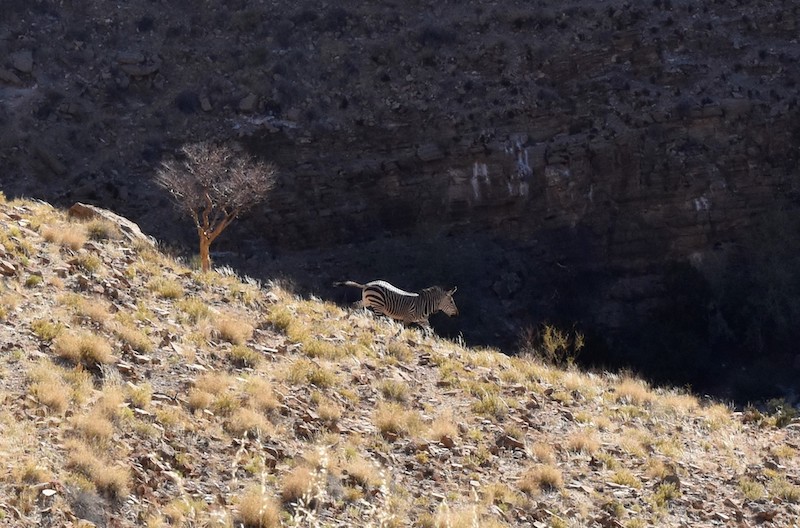
The mountain zebra can gallop down the rocky slopes with ease.
As we march up the next steep slope equipped with various supplies in our backpack and rock hammers in hand, we are marching through time. Layers of sediment have been deposited over the ages, one on top of the other, allowing us to see back in time as we go from the oldest sedimentary rocks at the bottom to the youngest at the top. By looking at clues in the rocks, geologists can deduce the types of environments that existed in the past, allowing us to imagine what the world looked like millions of years ago. In the case of these rocks, you would want a snorkel and a swimsuit to explore the shallow tropic waters and watch the sediments wash up and down the beach. And we know these rocks are extraordinarily old, older than any known plants or animals, as they formed 635 million years ago when microorganisms ruled the world.
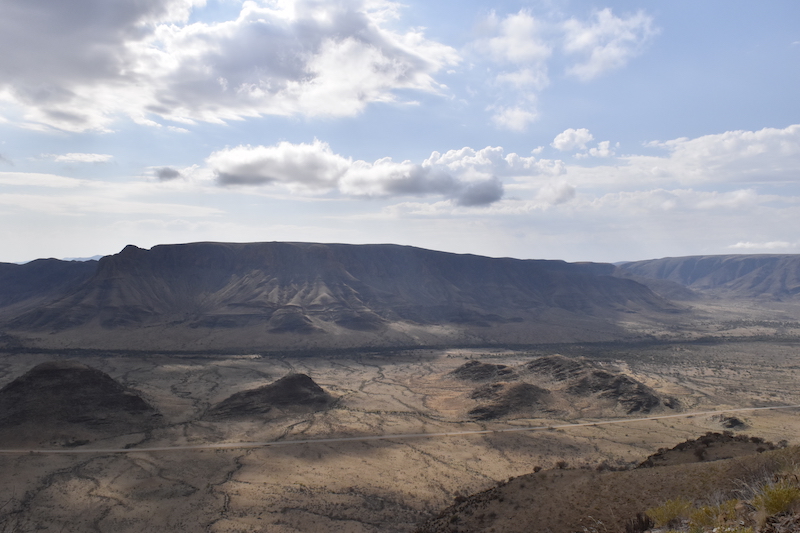
This arid desert is an unlikely spot to look for evidence of the Earth in deep freeze.
Decades ago, geologists found themselves with a paradox in the rock record. In areas all around the world, including here in the Naukluft Mountains of Namibia, they discovered rock deposits of similar ages—all indicating glacial environments that were directly followed by deposits typical of warm, even tropical, waters. Reconstructions of the past arrangement of continents then showed that many of these glacial sediments were deposited into the oceans near the equator. These findings were astonishing as glaciers are typically not associated with warm tropical regions or environments—just think of the difference between Antarctica and the Amazon rainforest!
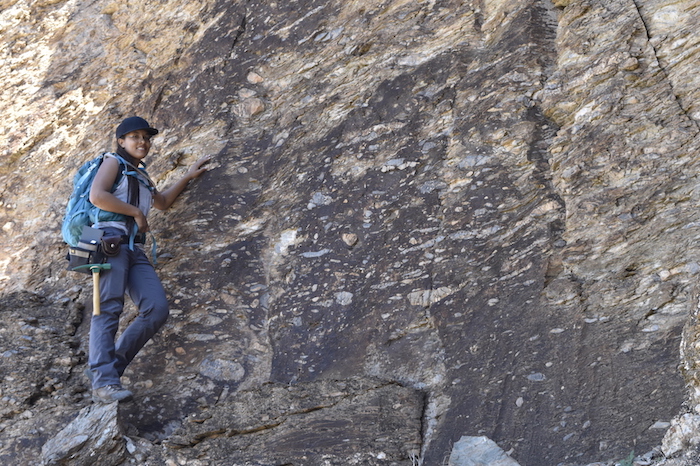
My field partner, and fellow Caltech grad student, Cecilia Sanders posing with deposits that are associated with a glacial environment. The sediments are a diverse mix of cobbles and boulders within a mass of fine sands and clays, a similar mix of sediments to what we would find at the end of active glaciers today. Cecilia is leading a project on comparable post-glacial rocks in southeast Brazil.
This geologic paradox has since developed into the idea of a global “Snowball Earth”—a period of millions of years when the oceans froze over and the continents were covered by massive ice sheets. The Earth was only able to escape this snowball by one of the few geologic processes still active in this frozen world: volcanic eruptions. Eruptions spewed gases like carbon dioxide (CO2) into the atmosphere. The surface of the Earth is constantly heated by our sun, but without an atmosphere, most of that heat would just escape into space. But greenhouse gases, like CO2, can intercept much of that escaping energy and trap it in the atmosphere, like a jacket keeping us warm by trapping our body heat. The global glaciation had shut down the primary ways that the Earth can slowly draw down CO2 , causing the CO2 to build up in the atmosphere over millions of years until the greenhouse effect was so strong and the heating so effective that the ice began to melt. The Snowball Earth then melted rapidly as the intense greenhouse effect hurled the planet into a period of extreme warmth.
The termination of this Snowball Earth was one of the most dramatic warming swings in Earth’s history. Improving our knowledge of this event will help us understand how Earth’s climate system operates during extreme perturbations associated with shifts in the CO2 balance. This may help us better predict the dynamics of climate change now that humans are the ones disrupting the CO2 balance by burning fossil fuels.
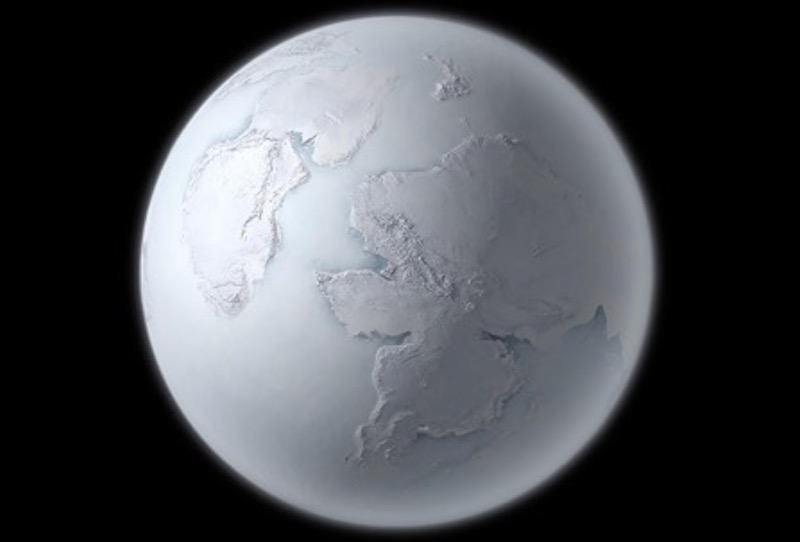
An artist’s impression of one of the Snowball Earth events where the entire planet is covered in ice. Notice how the continents visible are not like those around today as the processes of plate tectonics have drastically changed the shape, size, and locations of the continents over the hundreds of millions of years.
To study this geological curiosity, we begin moving uphill through progressively younger rocks, and start knocking off hunks of rocks to take back to our lab as samples. Hiking up a narrow gulley, I scramble up a pile of boulders and freeze in utter terror. No further than six feet away from me is a massive snake—a couple of inches thick, at least five to six feet long, and solid black in color. In this region, it can only be the black mamba, one of the most poisonous snakes in the world. Without thinking, I drop everything and practically fall back down the gulley, my body so full of adrenaline I don’t feel my limbs getting bruised in the tumble. Releasing a stream of profanities, I make it safely back down to Cecilia. The snake slithers into the crannies between the boulders we were climbing, I only then realize I’d left our equipment on top of those boulders—we have to go back up there! Lying, panting, on the cold rock we listen to some soothing music and wait for the adrenaline to subside, until we eventually build up the courage to make it back up to our equipment and cautiously continue with our work.
Moving forward, I’m nervously eyeing every nook and cranny that could hide a slithering reptile, and I can’t help but ask myself: What are we doing out here again? The rocks that I’m looking to study are the warm-water rocks deposited right after the glacial sediments. The warm-water rocks are carbonates—a general rock group that includes limestone and marble. Different types of carbonate sediments indicate different types of environments within a region. For example, sandy sediments were likely laid down in some sort of active beach or shoal, while muds and clays were likely deposited in deeper, more quiet waters offshore. The most comparable region today to find these kinds of warm-water carbonate sediments and their environments would be regions like the white sand beaches and bays of the Bahamas.
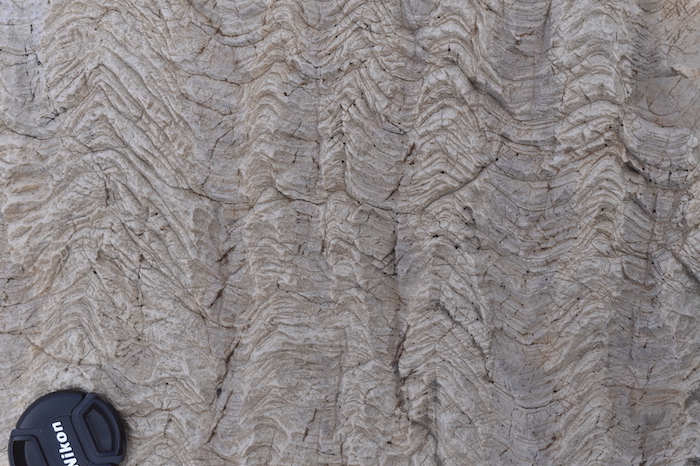
A close-up of “stromatolites”, structures that would have formed mounds on the seafloor and are usually associated with microbes. In this case, in a time before animals, large scale collections of these likely formed buildups akin to modern coral reefs.
In practice, the field work involves systematically analyzing these rocks layer by layer, taking detailed notes of any observations we can make about the rocks, such as the color, texture, size, and how round the sediment grains are, looking for subtle clues as to how they formed. We do this for hundreds of vertical feet in one site and then go through the same sequence of layers in another site to see how they change. Then, regularly-spaced samples up through the layers of the rocks will allow us to make more detailed analyses in the lab. Studying these deposits could give us insights as to how the world transitioned from a “snowball” to a hot, ice-free world and allow us to sort out just how rapid and how globally variable this climate transition was.
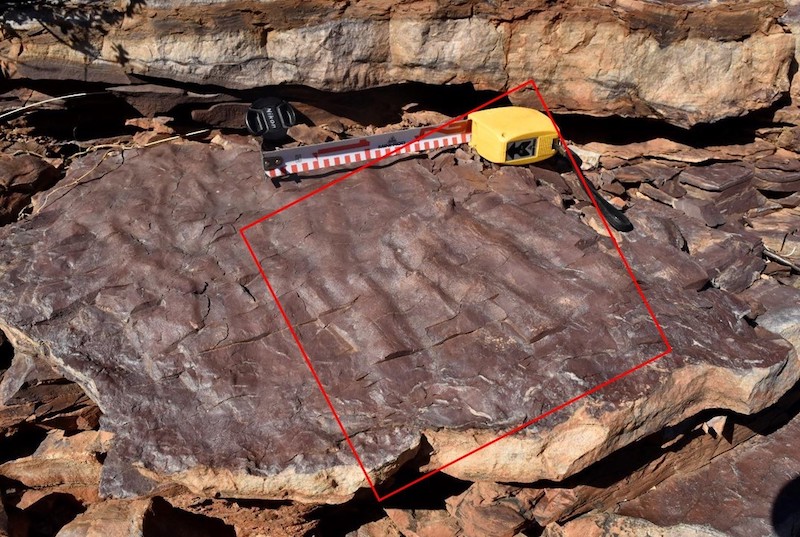
Sedimentary features can serve as important clues, like these ripples (the parallel forms within the red box) that likely formed by wave action in shallow water and are similar to the ripples you would find in the sand on a beach today.
Yet, the rocks don’t always make it easy for us. Tectonic forces—the same that sent India colliding into Asia to build the Himalayas and that inch New York ever further from London at the speed that our fingernails grow—have also jumbled the packages of rocks we are studying so that they aren’t clean horizontal layers of sediment. The compression of our sedimentary rocks by the collisions of past continents has contorted the otherwise flat-lying layers into a mess of folded rock that needs to be untangled so that we can be confident of the relationships between the sedimentary layers. We do this by using specialized compasses to measure the 3D orientation of the folded layers and observing their relative geometries.
After a dusk hike down the mountain, we make it back to camp as the stars begin to come out. In this remote desert the night sky is densely packed with bright stars, and we get to see the Milky Way in all its brilliant glory. The vast scale of the galaxy can often make us feel small by comparison, and in much the same way the study of Earth’s deep past can cause the span of our lives and even that of human history to feel insignificant. Yet, we are part of the Earth’s history, just as we are part of this galaxy, and our actions have tangible consequences. The Snowball Earth event is one of many examples in Earth’s long history where changes in the planet’s climate were primarily driven by changes in the balance of greenhouse gases. The difference today is just that humans are the ones driving the change—and we’re around to feel the impact.
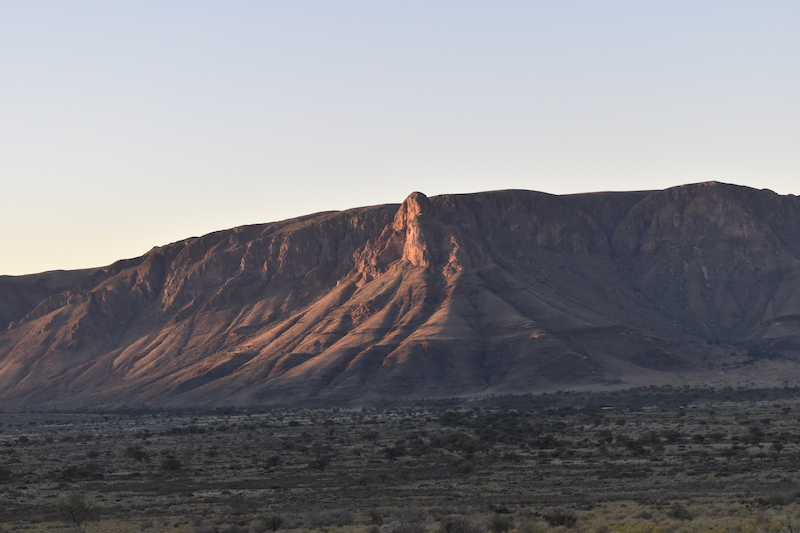
Sunset in our valley.
“Aroooo!” I get shaken out of my thoughts by the howling of jackals. The moon must have risen. I look down at the dwindling campfire; I guess it’s about time for bed. Got to be ready to hike back up to the mountain tomorrow.




